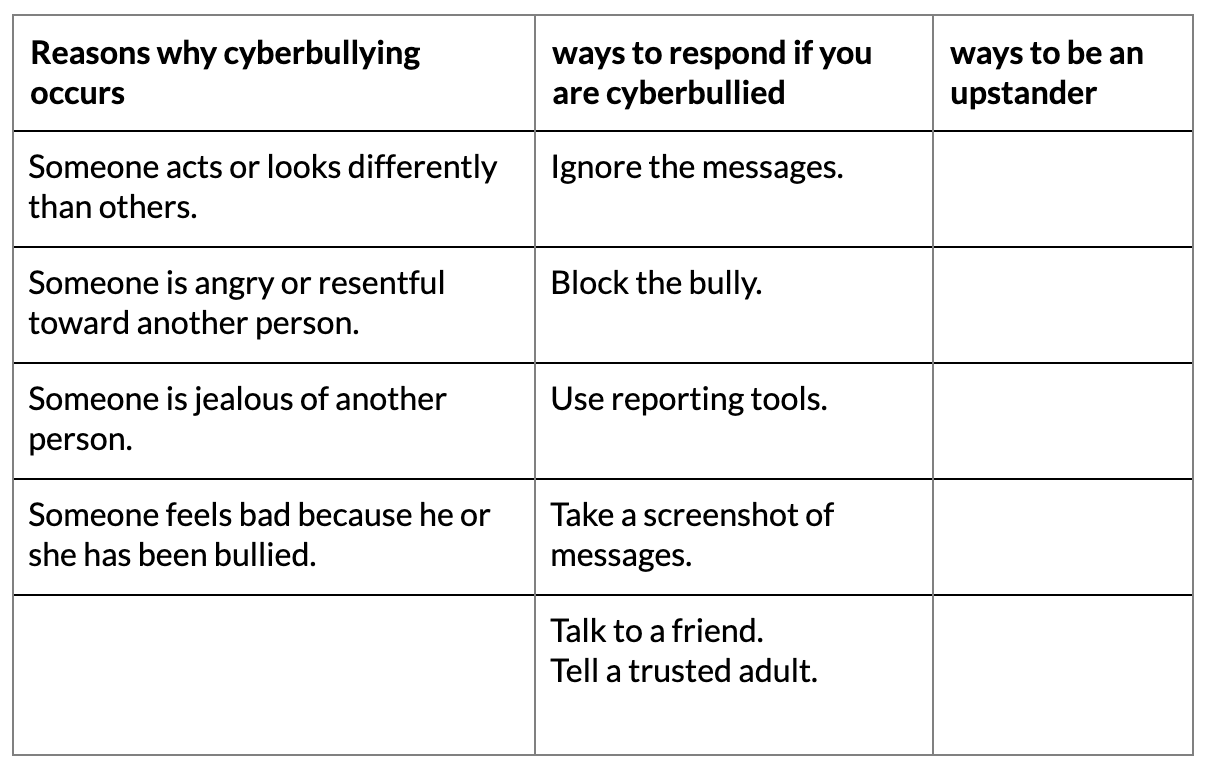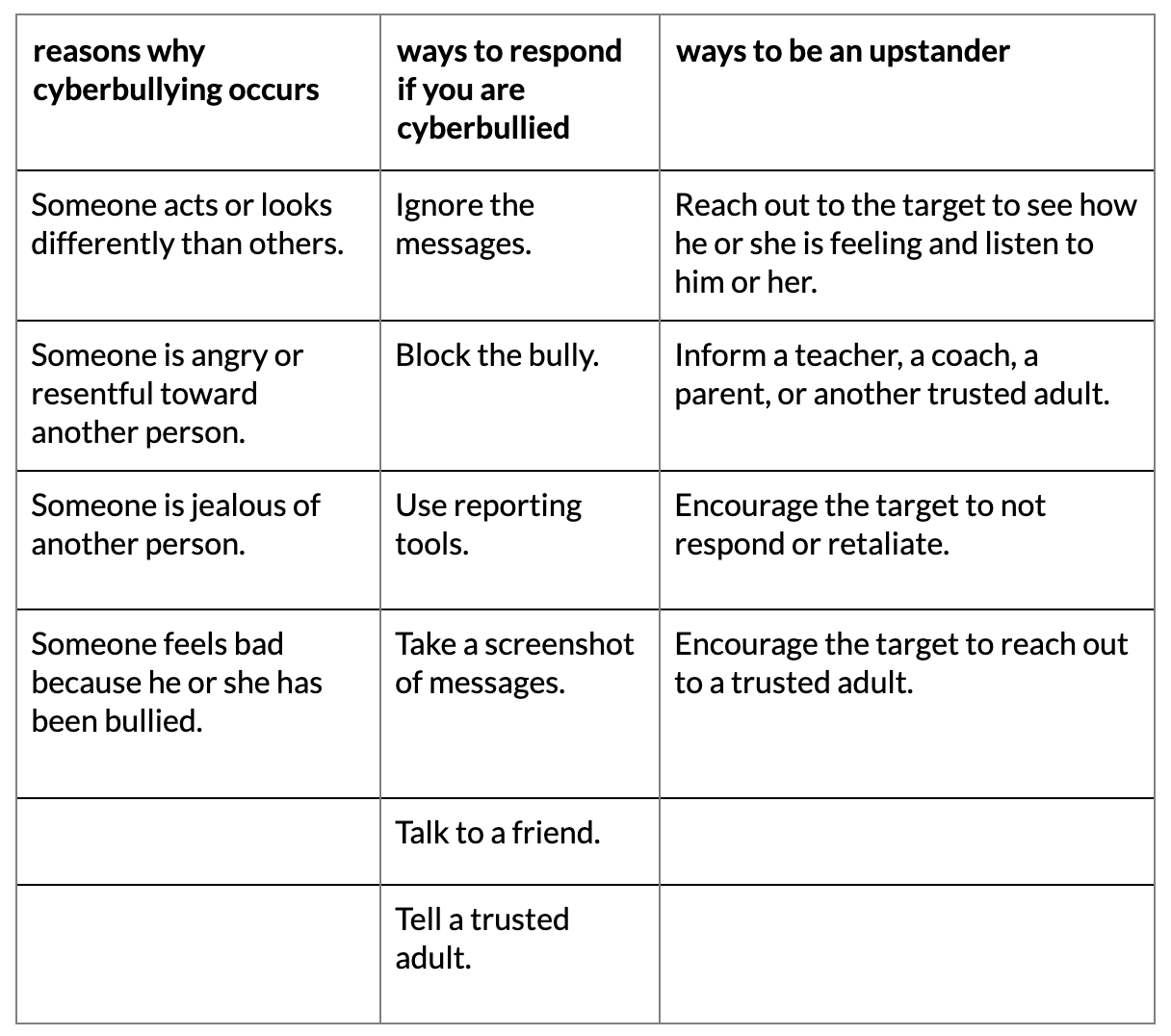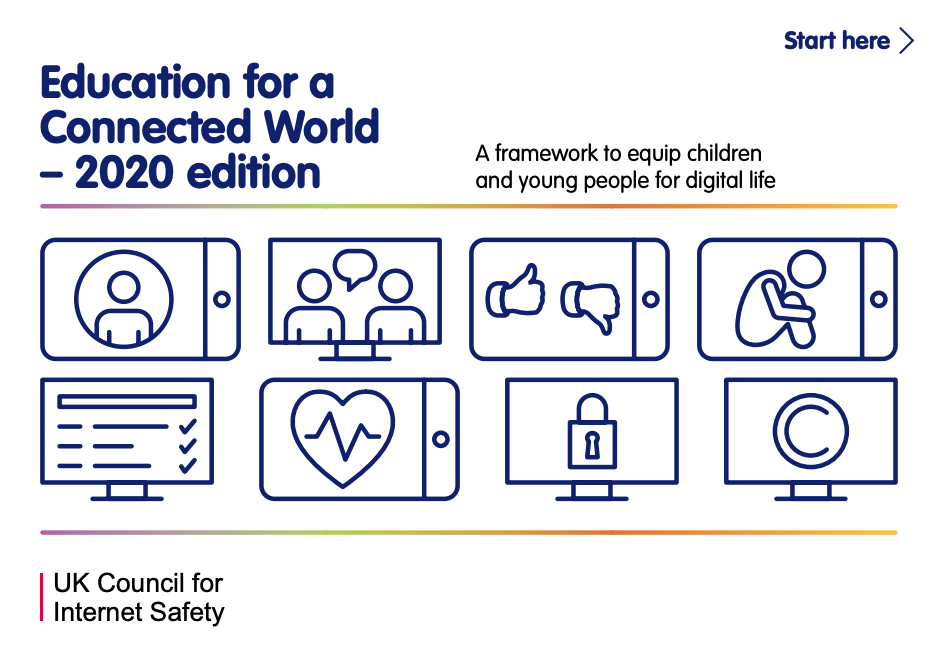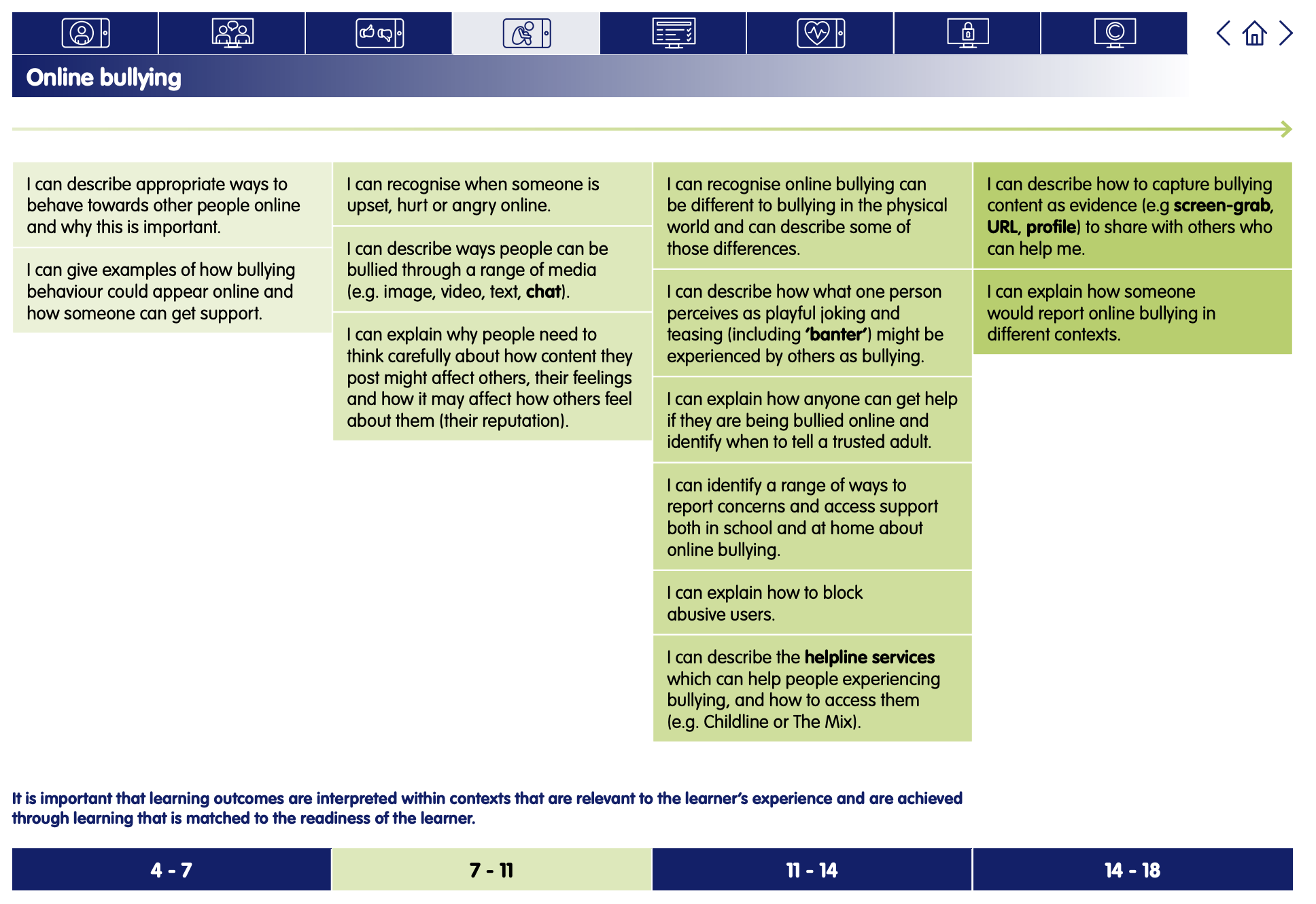Is It Cyberbullying?
Digital Literacy and Online Safety (Y6) - Lesson 5
A note about this lesson

This lesson is taken from Common Sense Education’s excellent Digital Citizenship curriculum. Their resources are shared for free under A Creative Commons Attribution- NonCommercial- NoDerivatives 4.0 International License.
You can find the original resources HERE.
Objectives
- Recognise similarities and differences between in-person bullying, cyberbullying, and being mean.
- Empathise with the targets of cyberbullying.
- Identify strategies for dealing with cyberbullying and ways they can be an upstander for those being bullied.
Lesson Resources
- Blank index cards · Markers or crayons
- Is It Cyberbullying? - Lesson Slides
- Is It Cyberbullying? - Sondra's Story Student Handout
- Is It Cyberbullying? - Sondra's Story Student Handout (TEACHER VERSION)
Lesson 1 - Finding My Media Balance
Lesson 2 - You Won't Believe This!
Lesson 3 - Beyond Gender Stereotypes
Lesson 4 - Digital Friendships
Lesson 5 - Is It Cyberbullying?
Lesson 6 - Reading News Online
Links to Education for a Connected World.
This lesson from Common Sense Media's Digital Citizenship curriculum links to the following strands from the Online bullying section of the Education for a Connected World framework.
Introduction - Is It Cyberbullying?
Let's face it: Some online spaces can be full of negative, rude, or downright mean behaviour. But what counts as cyberbullying? Help your students learn what is -- and what isn't -- cyberbullying, and give them the tools they'll need to combat the problem.
Before the lesson: As an optional activity before the lesson, have students play the E-volve game in Digital Passport™ by Common Sense Education. This will help introduce key concepts of this lesson. To see more, check out the Digital Passport Educator Guide.
Ask: Is there a difference between joking, being mean, and bullying? What is it? Take turns sharing your idea with your partner. (Slide 4)
Invite students to respond, and capture examples offered by students in the three columns on Slide 5.
Say: Today, we’re going to watch a video that talks about these different behaviours, as well as another behaviour called cyberbullying. Show the video What's Cyberbullying? and ask: Based on this video, what do you think the term cyberbullying means? (Slide 6)
Call on students to respond. Guide students to define cyberbullying as using digital devices, sites, and apps to intimidate, harm, and upset someone. (Slide 7)
Expand - Who’s Involved?
Say: Bullying or cyberbullying situations always include a target (the person being bullied) and a bully (the person doing the bullying). The bullying or cyberbullying can occur for many different reasons. Has anyone here ever seen or experienced a situation involving bullying? What happened? Take turns sharing your ideas with a partner. (Slide 8)
Invite students to share their answers. Using their answers, fill out the first two columns on Slide 9. Answers will vary, but they can include:

Say: The target and the bully are usually not the only ones involved in a cyberbullying situation. There are also the people who see it. These people can either be bystanders or upstanders. A bystander observes a conflict or unacceptable behaviour, but does not take part in it. An upstander does try to stop it. (Slide 10)
What do you think are some ways to be an upstander if you see a bullying or cyberbullying situation?
Invite students to share their answers. Using their answers, fill out the third column on Slide 9. Responses might include:

Say: These are all important to know in case you experience or see a cyberbullying situation. Another really important thing to know about is empathy. Empathy is when you imagine the feelings that someone else is experiencing. Ask: Why do you think this is important if there's a situation involving cyberbullying? Why would it be helpful to have empathy? (Slide 11)
Invite students to answer. Students may say that it's important because if the bully empathises with the target, the bully would stop. Explain that it is also important because:
- Empathy could motivate someone to be an upstander instead of a bystander.
- If you try to empathise with the bully, it could help you understand why the bully is acting that way.
Analyse - Sonia’s Story
Distribute the Sondra's Story Student Handout and invite students to read the scenario out loud. Ask: Is this an example of cyberbullying? Why or why not? Take turns sharing your ideas with a partner.
Invite students to share. Prompt students to refer to the definition of cyberbullying in their answers.
Say: Now you're going to analyse the story. Work with your partner to answer the questions on your handout. (Slide 12)
Allow students 10 minutes to work.
Invite students to share their answers from the handout. Use the teacher's version of the handout to clarify possible answers.\
Plenary - Upstander Cards
Distribute blank index cards and markers or coloured pencils to students. Say: We've talked a lot about bullying and ways to respond to it. To wrap up, you're going to create upstander cards. Your card can be for any of the roles in a cyberbullying situation: the target, the bully, or someone who sees it.
Read the directions from Slide 13 and allow students the rest of class to work on their cards. Allow students to create cards individually, in pairs, or in groups.
Collect student cards and post them up in the room.
Have students complete the Lesson Quiz. Send home the Family Activity and Family Tips.


